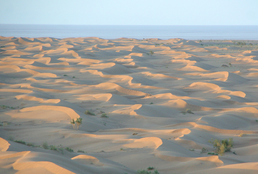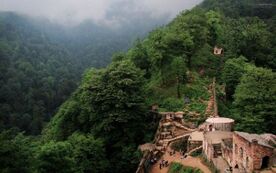Union of Zorasani Irfanic Republics: Difference between revisions
| Line 152: | Line 152: | ||
| caption3 = Mount Langarud | | caption3 = Mount Langarud | ||
| image4 = ZuvandForest.jpg | | image4 = ZuvandForest.jpg | ||
| width4 = | | width4 = 276 | ||
| caption4 = Rainforest of the Zuvand | | caption4 = Rainforest of the Zuvand | ||
}} | }} | ||
Revision as of 20:09, 22 March 2019
This article is incomplete because it is pending further input from participants, or it is a work-in-progress by one author. Please comment on this article's talk page to share your input, comments and questions. Note: To contribute to this article, you may need to seek help from the author(s) of this page. |
Union of Nautasian Irfanic Republics اتحاد جماهیراسلامی آسیای Ettehād-ye Jamaheer-ye Erfāni-ye Nasagheer اتحاد الجمهوريات الإسلامية الآسيوية al-Ittiḥād al-Jumhūrīat al-Erfānīyah al-Nausiawia | |
|---|---|
| Motto: استقلال، آزادی، جمهوری اسلامی Esteqlāl, Āzādi, Ettehād اتِّحاد حُرّيّة اسْتِقْلال Istiqlāl, Ḥurriyya, Ittiḥād (Independence, Freedom, Union) | |
Anthem:
| |
| Capital and largest city | Zahedan |
| Official languages | Arabic Pasdani |
| Ethnic groups | See Ethnicity |
| Demonym(s) | Nautasian |
| Government | Federal sattarist parliamentary republic |
| Mahrdad Ali Sattari | |
| Evren Volkan | |
| Farzad Akbari | |
| Ibrahim Al-Fahim | |
| Legislature | Supreme Assembly |
| Establishment | |
| 31 October 1926 | |
• Constitution adopted | 4 November 1926 |
• Treaty of Unification | 22 May 1939 |
| 1974-1979 | |
| 6 April 1979 | |
• Current constitution | 10 May 2018 |
| Area | |
• Total | 3,310,393 km2 (1,278,150 sq mi) |
• Water (%) | 1.3% |
| Population | |
• 2017 estimate | 126,323,104 |
• Density | 38.159/km2 (98.8/sq mi) |
| GDP (PPP) | estimate |
• Total | $1.516 trillion |
• Per capita | $12,002.59 |
| GDP (nominal) | estimate |
• Total | $941.738 billion |
• Per capita | $7,455 |
| Gini | 46.9 high |
| HDI | 0.769 high |
| Currency | Toman (₮) |
| Date format | dd.mm.yyyy |
| Driving side | left |
The Union of Nautasian Irfanic Repulics (Pasdani: اتحاد جماهیراسلامی آسیای; Ettehād-ye Jamaheer-ye Erfāni-ye Nasagheer, EJEN; Arabic: اتحاد الجمهوريات الإسلامية الآسيوية; al-Ittiḥād al-Jumhūrīat al-Erfānīyah al-Nausiawia, MJEN), commonly called the Nautasian Union or the UNIR, is a federal single-party Irfanic Collectivist state located in Nautasia in central Borea. The UNIR is bordered by Siphria to the west, Mazaristan and Alatistan to the north, the Socialist Confederation of Council Republics and Kadaria to the east and the Sea of Shahadazhan. The UNIR is home to diverse ethnic groups, with Arta Irfan as the majority and XXX as the largest minority, it also includes XX, Yazidis, XX and a tiny minority of Abburites. Its two largest ethnic groups are Pasdanis and Arabs. With a population of 126.3 million it is the Xth largest country in the world and the largest in the region of Nautasia, and Xth largest in Borea, it has a total area of 3,310,393km² (1,278,150 sp mi), making it the largest in Nautasia and the Xth largest in the world.
The UNIR is the legal successor state to the Union of Khazestan and Pasdan, which was formed in 1926 following the Arduous Revolution as the first Islamic Collectivist state, this was followed by the Khazi-Pasdani Revolutionary War (1926-1928) and massive socio-political upheaval and change. Between 1929 and 1939, the country would be rocked by resistance and civil unrest as numerous minorities resisted "Normalisation", a process of cultural and linguistic assimilation into the Pasdani-Arab majority, this would culminate with the Treaty of Unification which equalised the minorities and created four new internal republics within the Union. The discovery of oil in the Dasht-e-Aftab in 1938 resulted in an economic revolution that dramatically altered standards of living, poverty and class relations within the next few decades. The 1950s saw the UKP attempt to export Islamic Collectivism to neighbouring countries, some of which remained colonial possessions sparking the Nautasian Crisis (1952-1956). A wave of de-colonisation followed and brought ideological tensions to the fore between the UKP and its neighbours, leading to the Heskif War, Aramand Incident and the Irvadistan War between 1974 and 1979. The war resulted in the annexation and ascension of Irvadistan into the UKP, which in turn formally became the Union of Nautasian Irfanic Republics. The rise of Javad Jahandar in 1975 resulted in dramatic political and economic reforms that unleashed the Nautasian Miracle, rapid industrialisation and diversification of the economy resulted in the UNIR becoming the largest economy in Nautasia and one of the largest in the world. The 1990s and early 2000s saw sporadic civil uprisings and instability, but were put down by 2002 with the Second Arduous Effort. Since, the UNIR has continued to develop economically and a limited liberalisation of its political system.
The UNIR is a member of the Organization of Esquarian Nations, Organisation of Nautasian Unity, International Forum for Developing States and is recognised as a regional to middle power by international commentators; some have claimed that it is a potential superpower in the event of further economic development. The UNIR has the largest proven oil reserves and is the world's largest producer of oil and natural gas, leading it to be considered an energy superpower.
History
Pre-history
Classical
Middle ages
1800s-1920s
Contemporary
Geography
The land area of the UNIR is XX square miles (XX km2). Pasdan is the largest state at XXXX square miles (XXXX km2). Aramand, is the smallest at is XXXXX square miles (XXX km2) in area. In Irvadistan the Ruqqad Highlands; which is home to Irvadistan's highest point, Mount Hajar Asud (2,814 m; 9,232 ft), divide the eastern coastal plain from the al-Ramal al-Wusta Desert, while directly south the Khazi eastern seaboard is divided from the Dasht-e-Aftab by the Yafā'Aswad highlands. The Dasht-e-Aftab covers roughly 36% of the Khazi-Pasdani central region. The Tinnin Plateau divides the Aftab from the western coastline, these mountains also aided the creation of the Aftab, by blocking rain-clouds from heading east. The Pasdani north-west is one of the world's most mountainous regions, its landscape dominated by rugged mountain ranges that separate various basins or plateaux from one another. The north-west is dominated by the Exri and Kolkakarans; the last contains Pasdan's highest point, Mount Langarud at 5,610 m (18,406 ft). To the south of the north-west and the Aftab are highlands that protect the southern plains from the desert and arid north. The southern Pasdani region varies between open flat plains to rolling yet fertile hills and valleys.
Irvadistan's interior is arid desert, but is punctuated by two fertile zones, from the north to south runs the Khabur and from the north to the east runs the Khanzir, these two rivers are vital for the country's agricultural regions and are the primary locations of the population. Both stripes of fertile ground are flanked by arid desert.
The UNIR, with its large size and geographic variety, includes most climate types. Having 11 climates out of the world's 13, the UNIR's climate is diverse, ranging from arid or semiarid, to subtropical along the Pasdani coast and the southern forests. On the southern edge of the country (the Great Southern coastal plain) temperatures rarely fall below freezing and the area remains humid for the rest of the year. Summer temperatures rarely exceed 29 °C (84.2 °F). Annual precipitation is 680 mm (26.8 in) in the eastern part of the plain and more than 1,700 mm (66.9 in) in the western part. Water Scarcity is considered to be the biggest threat to Pasdan, Khazestan and Ninejah and the UNIR at large.
To the west, settlements in the Kolkkaran basin experience lower temperatures, severe winters with below zero average daily temperatures and heavy snowfall. The eastern and central basins are arid, with less than 200 mm (7.9 in) of rain, and have occasional deserts. Average summer temperatures rarely exceed 38 °C (100.4 °F). The coastal plains of Irvadistan in south-western Pasdan have mild winters, and very humid and hot summers. The annual precipitation ranges from 135 to 355 mm (5.3 to 14.0 in).
Government and politics
The UNIR is a federal, Sattarist, parliamentary republic. The Union’s political system operates under a framework laid out in the 1979 constitution known as the Treaty of Ascension (Ertegha-Peyman). Amendments generally require a two-thirds majority of both the Popular Council and the Superior Council; the fundamental principles of the constitution, as expressed in the articles guaranteeing human dignity, the role of Irfan, the federal structure, and the rule of law are valid in perpetuity.
The Rayis Jomhur-katee (state president), Evren Volkan (19 March 2015–present), is the head of state and invested primarily with representative responsibilities and powers. He is elected by the Superior Council as one of two candidates presented by the Popular Council. The second-highest official in the Nautasian order of precedence is the Avval A’Zam (First Minister), the head of government, who is appointed by the Rayis-Jomhur-katee after being elected by the Popular Council. The third-highest ranking official is the Rayisol-Vozara (President of the Council), who is elected by the Popular Council and responsible for overseeing the daily sessions of the body.
The First Minister, Farzad Akbari (20 March 2015–present), is the head of government and exercises executive power through their State Council, similar to the role of a Prime Minister in other parliamentary democracies. Federal legislative power is vested in the parliament consisting of the Majlis-Mee (Popular Council) and Majlis-Ala (Superior Council) , which together form the legislative body. The Majlis-Mee is elected through direct elections, by first-past-the-post. The members of the Majlis-Ala are divided between those who represent the governments of seven federated states, elected through direct elections by first-past-the-post and those (two-thirds majority), who are appointed by the military.
Since 1979, the entire political system of the UNIR has been constitutionally mandated as non-partisan, with no formal political party, movement or club being permitted to exist within the federal, state or local levels of government. However, the federal level does see several informal blocs or groupings of politicians. The three most prominent blocs are the Nautasian Alliance of the Great Journey, the League of Revolutionary Pioneers and the Civic and Just Association.
Legislature
The legislature of the Union, known as the Popular and National Council, is a bicameral body, and is comprised of a 108-member Superior Council (upper house) and a 580-member Popular Council (lower house), the Popular Council is the sovereign national body. Members of the Popular Council are elected through the first-past-the-post system under universal adult suffrage, representing electoral districts known as Popular constituencies, all members serve for four-year terms. All candidates are vetted by the Joint Commission for Political Stability, a body comprised of senior figures from the military and clergy.
The Superior Council has one-third (36 members) elected from the seven constituent states and two union territories (each providing 4 members), the remaining 72 are appointed by the National Commission for Governance and Unity, a military run-body. The official role of the Superior Council is to equalise the power and representation of the seven states and ensure that all legislation works for the benefit of all states of the union.
A third body, though not constitutionally recognised as part of the legislature is the National Arbitration Council which is comprised of six jurists and seven military officers (nominally the most senior in the union). The Council interprets the constitution and may veto the Parliament. If a law is deemed incompatible with the constitution or Esafkar (Irfanic law), it is referred back to the Parliament for revision.
The legislature of the union is unique in that both houses are formally non-partisan. Though informal groupings of politicians do exist, none operate a structure, organising document or official leadership.








